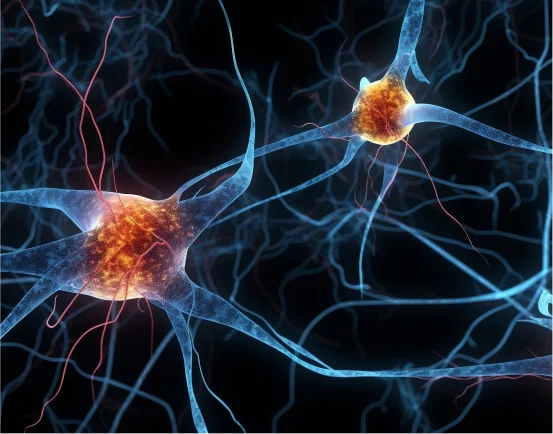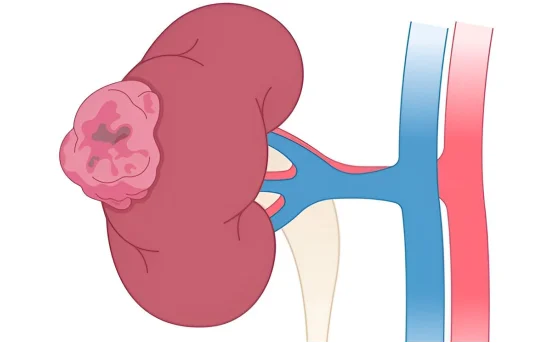Among the human brain parts, the brainstem stands out as one of the most important. It oversees many essential activities like respiration, heart rate, and level of awareness. Tumors, vascular malformations, or even traumatic injuries can affect the brainstem and may necessitate a complex surgical procedure known as brainstem surgery. Understanding of symptoms for brainstem surgery.
Specific precursors indicative of brainstem dysfunction often precede such surgeries. If these signs are detected early on, a prompt diagnosis is possible, resulting in more effective management and improved treatment outcomes.
Why Recognizing Symptoms is Crucial
The brainstem is a region that can develop disorders with insidious progression. They may present symptoms common to other neurological conditions. The potential complications from these untreated disorders can be severely debilitating, such as permanent paralysis, coma, or death. Identifying the early signs and symptoms of brainstem disorders, however, is essential to allow timely diagnosis and intervention.
Usual Symptoms for Brainstem Surgery
The symptoms listed below may indicate a serious problem with the brainstem that needs further assessment:
- Brainstem Issues Involving Cranial Nerve Malfunction
A number of cranial nerves are located in the brainstem. Their dysfunction can produce:
- Facial weakness or paralysis
- Diplopia
- Difficulty in hearing
- Tinnitus
- Nystagmus
Cranial tumors or compression of nervous structures may be serving the brainstem regions and lead to these symptoms.
- Motor Weakness or Paralysis
Other symptoms include:
- Weakness in limbs
- Ataxia
- Unsteady balance
- Stiff muscles or muscle spasticity
These motor symptoms often arise when lesions on the brainstem damage vital motor control areas, including but not limited to the corticospinal tract.
- Disturbances of Sensation
Change in perceived sensations can appear as:
- Paresthesia
- Reduced sensation in half or whole body
- Impaired ability to identify temperature or pain
Due to lesions on the brainstem, their operation can be disrupted, resulting in sensory loss.
- Dizzy Spells: Spinning Sensations: Difficulties With Balance
Dizziness with or without spinning feeling
- Poor stability
- Frequent falling episodes
- Unexplained nausea or vomiting unconnected to gastric illness
These symptoms may point toward dysfunction of the cerebellum or vestibular nuclei which closely articulate with the brainstem.
- Breathing and Cardiovascular System Irregularities
- Apnea or abnormal breathing patterns
- Reduced heart rate and blood pressure
- Reduced alertness and difficulty remaining fully awake
Disabling lesions or compression of the brainstem, which governs life-sustaining automatic processes, can pose grave danger to life.
- Altered Conciousness and Cognitive Changes
- Increased Diffculty with focus
- Increased Confusion with Memory Recall
- Increased Sleepiness or Lethargy
- Extreme persistent mental impairments
Changes in mental functions can result from pressure on the activating system reticular system or on the brain stem regions.
Infrequent but Worrisome Symptoms
Hiccups that last for days, unresolved even by time (intractable hiccups)
- Acute hearing los
- Chronic headache, especially occipital
- Vomiting without the sensation of nausea
- Difficulties with normal speech (dysarthria)
These symptoms are not common, but they may be indicative of a developing tumor or other abnormalities in the brainstem region.
Symptoms From The Brainstem Are Other Parts Of The Bod
Identifying underlying factors is useful for determining if surgical intervention is necessary:
- Brainstem Glioma (frequently diagnosed in pediatrics and adolescents
- Cavernous Malformations or AVMs (Arteriovenous Malformations)
- Fragments of trauma or brainstem contusions
- Multiple Sclerosis
- Chiari malformation
- Secondary tumors
- Abscess or encephalitis infections
Any of these conditions may result in the above symptoms and require surgical treatment of the brainstem if medical or conservative treatment fails.
Diagnosis of Brainstem Conditions
The following diagnostic methods are frequently employed in assessing whether symptoms are surgical in nature:
- MRI (Magnetic Resonance Imaging)
Through the use of MRI, tumors, anomalous blood vessels, or inflammation can be detected in the brainstem as high-resolution images are taken.
- CT Scan
This scan is useful in identifying acute hemorrhage or trauma-related swelling.
- Angiography
This is most appropriate for patients with AVMs or aneurysms.
- Neurological Examination
A systematic consideration of reflexes, muscle tone, coordination, ocular and speech functions can pinpoint the lesion.
- Specimen collection via lumbar puncture
Used in cases presenting with infection or inflammatory conditions involving the brainstem.
How Is Brainstem Surgery Indicated?
In cases described below, brainstem surgery is indicated:
- The presence of a compressive tumor
- Hemorrhage or bleeding in the brainstem
- Failure of non-surgical measures (radiation, chemo)
- Imminent danger to life from compression of critical structures.
The lesion may be removed or reduced and the pressure and neurological dysfunction improved. Depending on the cause, surgery could be supplemented with radiotherapy or targeted pharmaceutical agent treatment.
Post-Surgery Symptoms to Monitor
Some new or persisting symptoms after brainstem surgery may include:
- Short-lived facial weakness
- Changes in speech or swallowing
- Coordination problems
- Cognitive fatigue
These conditions are often treated through rehabilitation and therapy, and many patients recover fully or have substantial improvement over time.
Conclusion
Brainstem surgery symptoms recognition may be critical for saving a life. The brainstem coordinates numerous essential functions. Even subtle signs like facial numbness, double vision, or gait incoordination are serious and should never be overlooked. Seek medical evaluation asap if you or someone close to you shows these warning signs. Diagnosis and treatment, including surgery if needed, tend to yield better results and enhance the individual’s well-being if done early.























